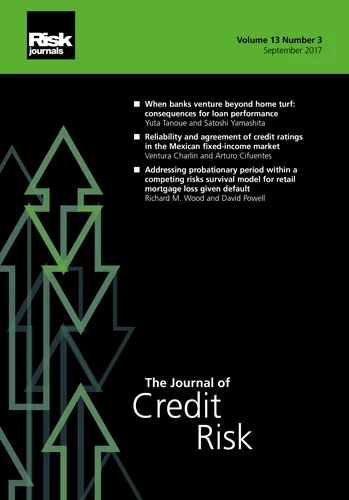Journal of Financial Market Infrastructures
ISSN:
2049-5412 (online)
Editor-in-chief: Manmohan Singh

Estimating “hedge and auction” liquidation costs in central counterparties: a closeout risk approach
Need to know
- CCP default management costs can be estimated using a closeout risk approach.
- This model assumes that defaulter’s positions are first hedged and then auctioned.
- The closeout strategy minimizes total costs considering both hedging and auctioning.
- Key risk metrics derived: total loss, maximum liquidity need and auction failure rate.
Abstract
A central counterparty should maintain a comprehensive set of default procedures, with the aim of meeting its obligations in the case of one or more participant defaults and regardless of potential adverse market conditions. One of its major components is the liquidation policy to be used to close out all the defaulter’s positions. A prevalent liquidation policy employed by several major central counterparties consists of first hedging the defaulter’s portfolio and then auctioning it off in the market. We present an integrated model based on a closeout risk framework for estimating the potential costs, liquidity needs and auction failure metrics associated with this particular policy. This framework recognizes the dynamic nature of liquidation processes, allowing the portfolio’s risk profile to change as positions are hedged and auctioned over time. This characteristic provides a basis for estimating risk metrics consistent with the underlying default management process. Practical applications of the model include: simulating the potential consequences of different assumptions about market liquidity, the availability of hedging assets and auction schedules; testing prospective default management policies; and performing sensitivity analysis on risk parameters.
Copyright Infopro Digital Limited. All rights reserved.
As outlined in our terms and conditions, https://www.infopro-digital.com/terms-and-conditions/subscriptions/ (point 2.4), printing is limited to a single copy.
If you would like to purchase additional rights please email info@risk.net
Copyright Infopro Digital Limited. All rights reserved.
You may share this content using our article tools. As outlined in our terms and conditions, https://www.infopro-digital.com/terms-and-conditions/subscriptions/ (clause 2.4), an Authorised User may only make one copy of the materials for their own personal use. You must also comply with the restrictions in clause 2.5.
If you would like to purchase additional rights please email info@risk.net








